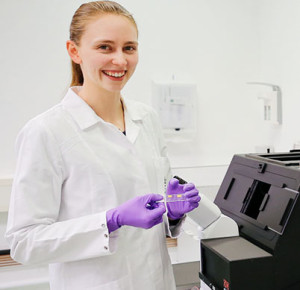Dortmund, 13th July 2022
ISAS congratulates PD Dr Dirk Janasek on his successfulhabilitation in the field of "Applied Analytics and Microfluidics" at the department of Biochemical and Chemical Engineering at TU Dortmund University. The biochemist has been conducting research on microfluidic systems for 20 years, of which he has spent the last 19 at ISAS.
Microfluidics refers to the transport and analysis of low volumes of fluids. In his research, Janasek uses free-flow electrophoresis: An electric field separates injections in a chamber filled with an electrolyte solution into different fractions. In diagnostics, this method isolates different analytes, for example proteins or nucleic acids, from samples like blood or saliva within milliseconds.

© Leibniz-Institut für Analytische Wissenschaften - ISAS - e.V.
Born in the city of Waldheim, he obtained his doctorate on enzyme-based sensors at Martin Luther University (MLU) of Halle-Wittenberg in 1999. Equipped with a Leopoldina fellowship, his path as a postdoc led him from MLU to Imperial College London. Since 2003, Janasek has been working at ISAS, where he heads the Standardisation research group.
In his habilitation lecture in mid-July, Janasek talked about paper-based microfluidic test systems. Blood sugar or haemostasis tests are well-known examples for this type of diagnostics. “What is special about microfluidic systems is that non-professionals can also use them to diagnose diseases,” Janasek explained. In his lecture, he demonstrated that especially in developing countries, these point-of-care tests (POC tests) could be an economic alternative to conventional laboratory diagnostics. “Paper-based POC tests are not only fast and reliable, but can also be produced at low costs and are easy to handle. Because their main component is the renewable resource timber, they can be produced and disposed of with a relatively small ecological footprint,” Janasek summed up.
(Bettina Dirauf)








